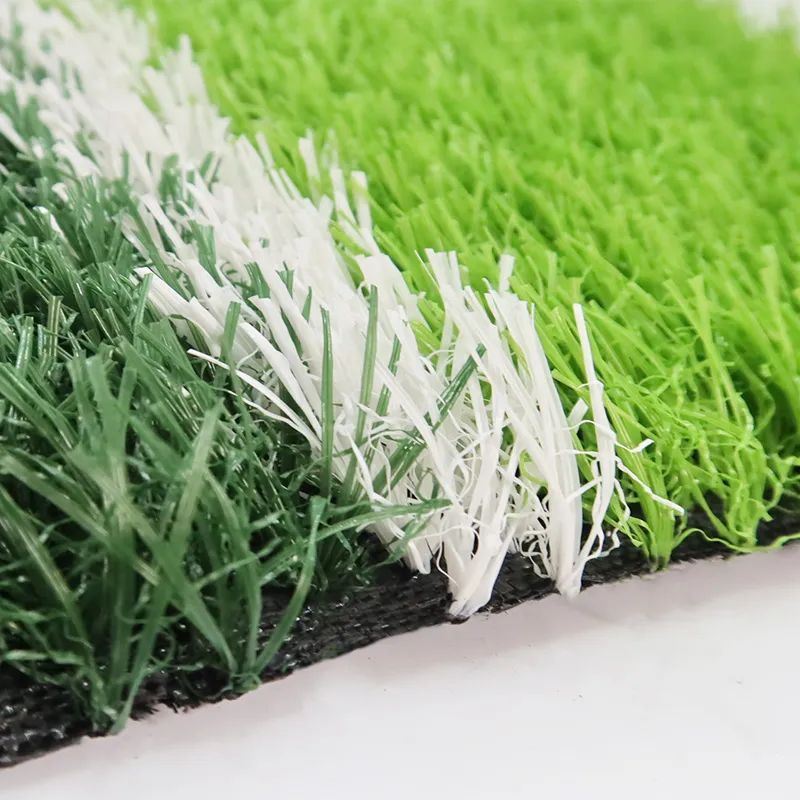
- Afrikaans
- Arabic
- Belarusian
- Bengali
- Czech
- Danish
- Dutch
- English
- Esperanto
- Estonian
- Finnish
- French
- German
- Greek
- Hindi
- Hungarian
- Icelandic
- Indonesian
- irish
- Italian
- Japanese
- kazakh
- Rwandese
- Korean
- Kyrgyz
- Lao
- Latin
- Latvian
- Malay
- Mongolian
- Myanmar
- Norwegian
- Persian
- Polish
- Portuguese
- Romanian
- Russian
- Serbian
- Spanish
- Swedish
- Tagalog
- Tajik
- Thai
- Turkish
- Turkmen
- Ukrainian
- Urdu
- Uighur
- Uzbek
- Vietnamese
artificial turf construction
Oct . 07, 2024 10:17 Back to list
The Comprehensive Guide to Artificial Turf Construction
Artificial turf, often referred to as synthetic grass, has become increasingly popular in various applications, including sports fields, residential lawns, and commercial landscapes. With its low maintenance and durable nature, artificial turf construction has seen a marked rise in interest. This article provides an in-depth overview of the artificial turf construction process, from planning to installation.
Understanding Artificial Turf
Before delving into the construction process, it’s essential to understand what artificial turf is. Typically made from synthetic fibers that mimic the appearance of natural grass, artificial turf is designed to provide a safe and aesthetically pleasing surface that requires minimal upkeep. Commonly used in sports fields, playgrounds, and even backyard patios, it is well-regarded for its resilience and longevity.
Step 1 Planning and Design
The first phase in artificial turf construction is careful planning and design. This includes determining the intended purpose of the turf, whether it be for a sports field, a backyard, or a decorative installation. Important factors to consider include the desired aesthetics, the level of foot traffic, and specific use cases (e.g., sports training versus casual play). Additionally, a site assessment is crucial. This involves analyzing the existing soil conditions, drainage, and layout to ensure a suitable foundation for the turf.
Step 2 Site Preparation
Once the design is finalized, the next step is site preparation. This process typically includes
1. Clearing the Area Remove any existing grass, debris, rocks, and other materials from the installation site. It is essential to create a clean, level surface for the turf.
2. Grading Proper grading is vital to ensure adequate drainage. The site should be sloped away from buildings and other structures to prevent water accumulation.
3. Compacting the Base A solid base often consists of crushed stone or gravel, which should be compacted to create a stable foundation. This layer plays a crucial role in ensuring proper drainage and preventing the turf from shifting over time.
Step 3 Installing the Infill
Infill is a material placed between the blades of artificial grass to provide stability, support, and cushioning. Common options include crumb rubber, silica sand, or a mixture of both. The choice of infill can depend on various factors, including usage requirements, budget, and aesthetic preferences. The installation process involves evenly spreading the infill across the entire surface using a specialized tool, ensuring a consistent layer throughout.
artificial turf construction

Step 4 Laying the Turf
With the site prepared and infill in place, it’s time to lay the artificial turf. This step involves
1. Roll Out the Turf Rolls of synthetic grass should be unrolled gently across the prepared surface, ensuring they are cut to the correct size.
2. Seaming If multiple pieces of turf are necessary, they must be seamed correctly. This process typically employs adhesives and specialized seam tapes to ensure a secure connection between sections.
3. Trimming Any excess turf around the edges should be trimmed for a clean finish. Precision is crucial here, as well-executed seams will enhance the overall look of the installation.
Step 5 Finalizing the Installation
After laying the turf, the final step involves several critical tasks
1. Brushing the Turf Use a power broom to lift the blades of grass and distribute the infill evenly. This process helps mimic the appearance of natural grass and enhances the durability of the turf.
2. Final Inspection Once the turf is brushed and settled, a thorough inspection is necessary to ensure that everything has been installed correctly and that there are no visible seams or uneven surfaces.
3. Maintenance Guidelines Providing maintenance guidelines to the client is essential for the longevity of the artificial turf. Regular brushing, occasional rinsing, and minor in-fill replenishment can keep the turf looking fresh and functional.
Conclusion
Artificial turf construction is a meticulous process that requires careful planning, execution, and maintenance. With its numerous advantages, including low maintenance and high durability, artificial turf has revolutionized how we approach both recreational and aesthetic outdoor spaces. By understanding the construction process, property owners and facility managers can make informed decisions and enjoy the benefits of a beautifully installed synthetic grass surface for years to come.
-
The Benefits of Artificial Turf for Indoors
NewsJul.15,2025
-
How Artificial Grass Suppliers Ensure Quality Products
NewsJul.15,2025
-
Artificial Grass and Pets: A Space for Relaxation
NewsJul.08,2025
-
Balcony & Outdoor Decoration with Artificial Grass
NewsJul.08,2025
-
Best Indoor Artificial Grass for Home
NewsJul.07,2025
-
Best Pet Turf for Dogs: Safe & Durable Artificial Grass Options
NewsJul.07,2025
Products categories









